1970s Decor is Making a Comeback
Say hello to 1970s nostalgia with the newest designer collections.
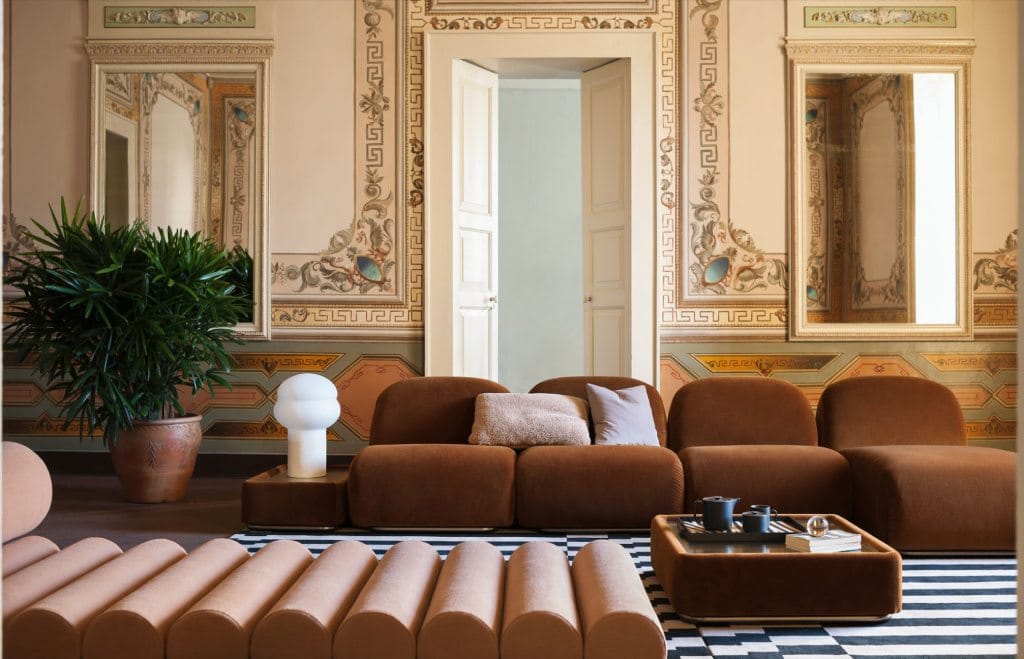
The 1970s were about a revolution in technology, politics, music and fashion. And, of course, also in decor. It was a decade of aesthetic exploration, where the riskiest bets and the most strident combinations became the norm. Exuberant psychedelic prints, vibrant colors and sumptuous velvets are hallmarks of '70s decor.
Contrary to the minimalism that has dominated our interiors for years, some elements of the past are now returning to our homes. The latest launches from our favorite brands showcase the return of the '70s decor. So, with the help of these select design brands, let's look at the characteristics of this design style that you'll want to have in your home.
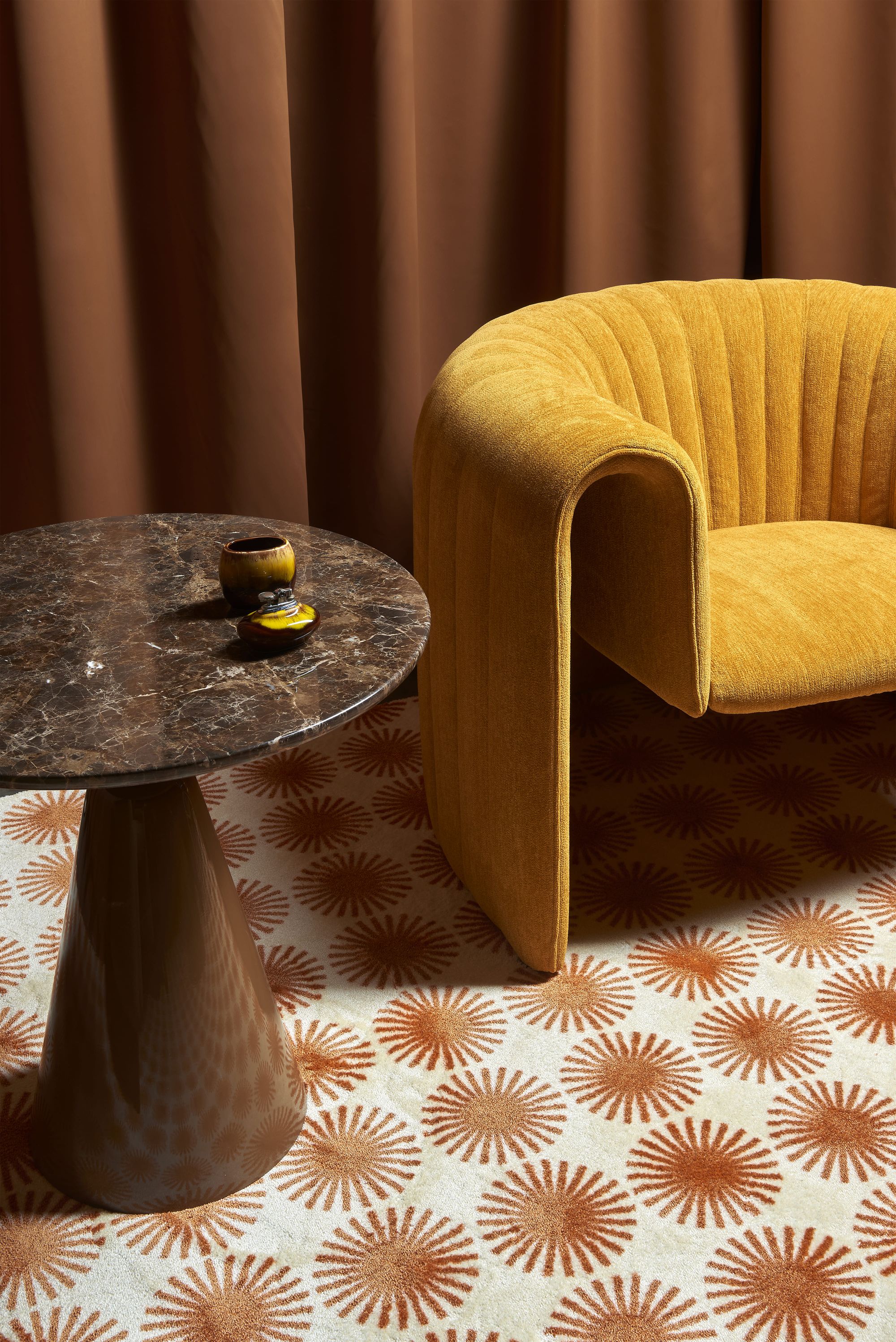
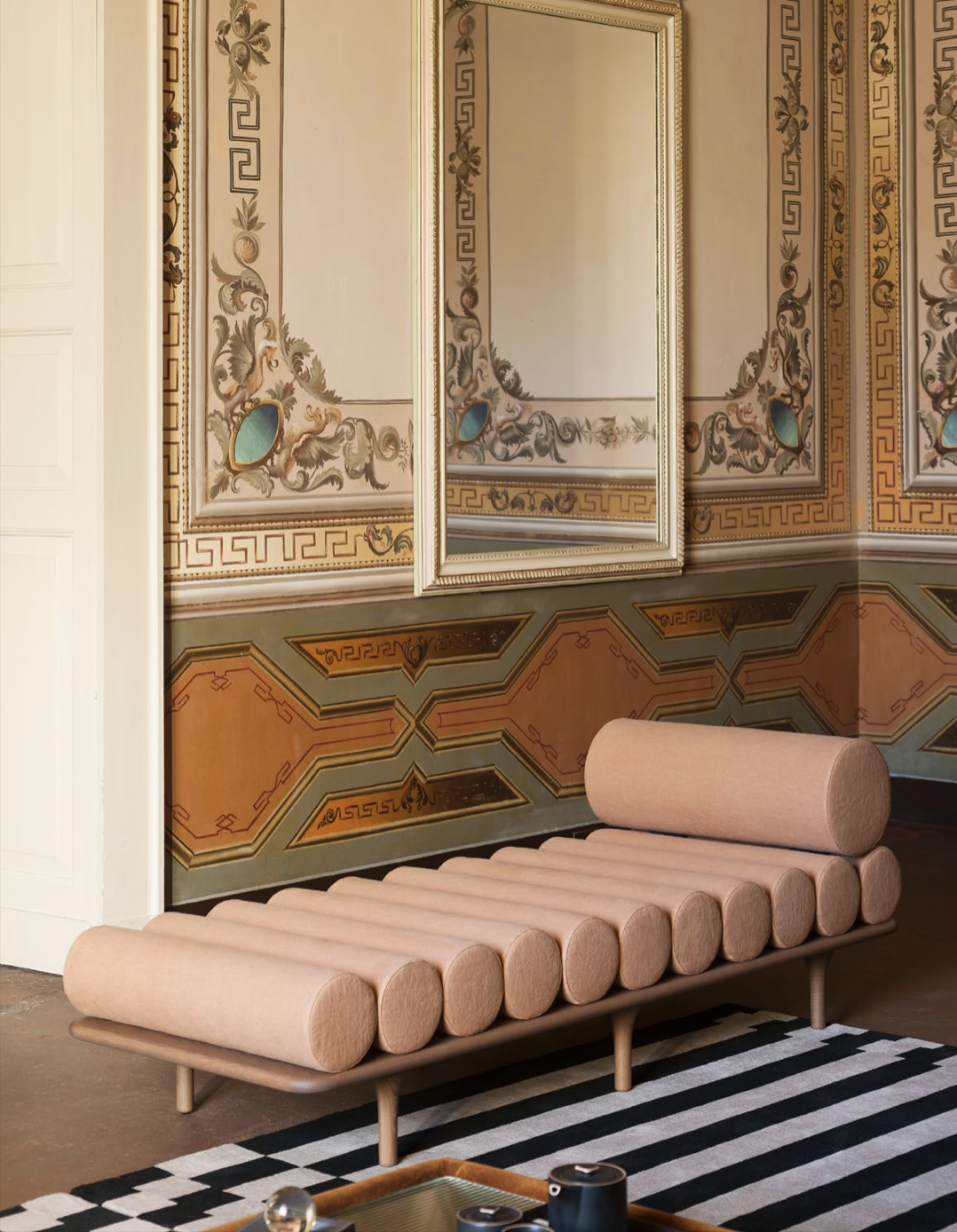
Armchair Remnant by NOTE for Sancal (left), Chaise longue Five to Nine by Studiopepe for Tacchini (right) | Images courtesy of Sancal and Tacchini.
Conversational sofas for a more social home
The '70s ushered a true cultural revolution, which transformed the style and way of life of many. Increasingly, the home becomes a social place where we receive guests and celebrate events. Many of us will recognize the stereotypical '70s living rooms, with a built-in sofa buried in the center, creating a secluded conversation space for all social gatherings.
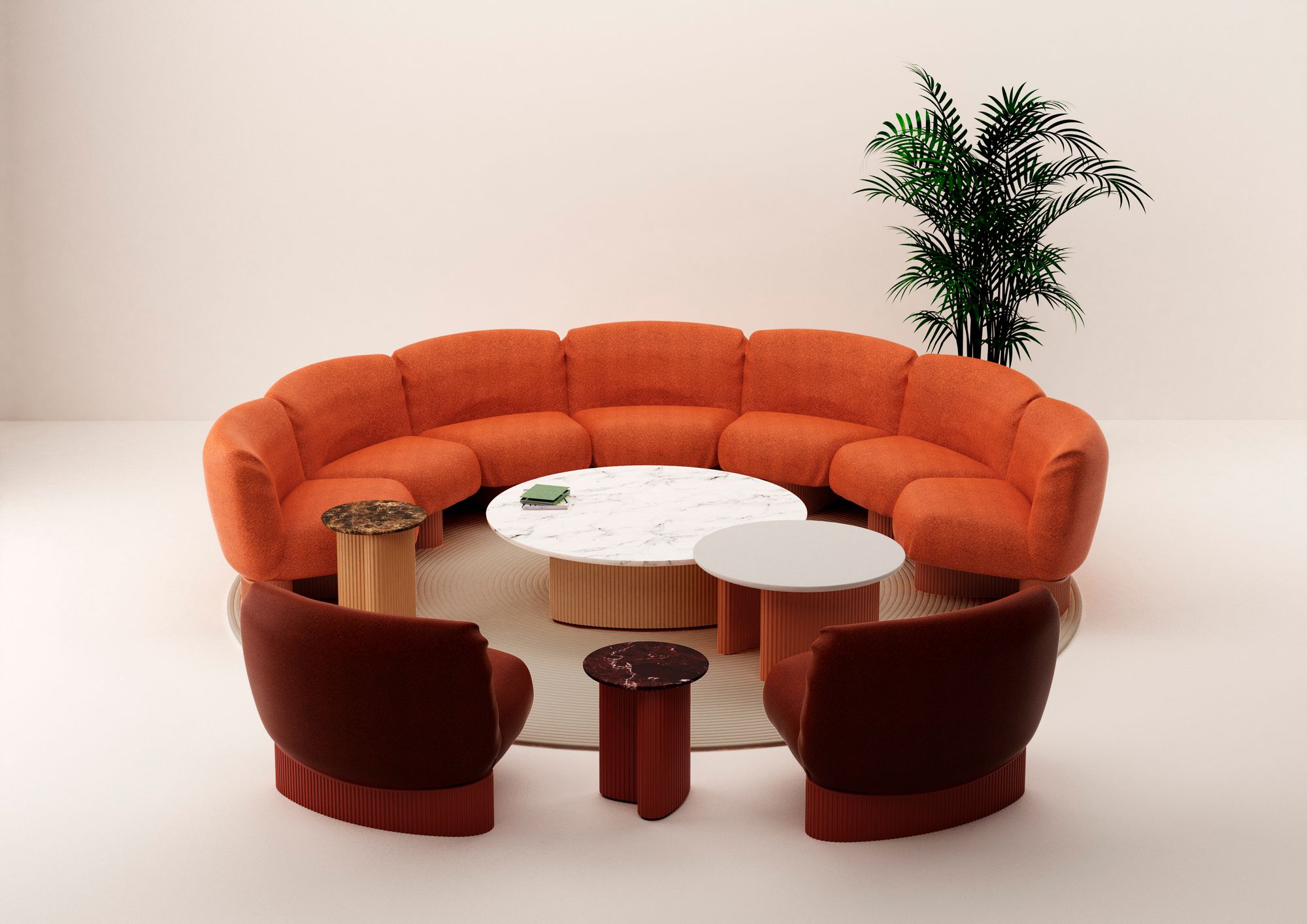
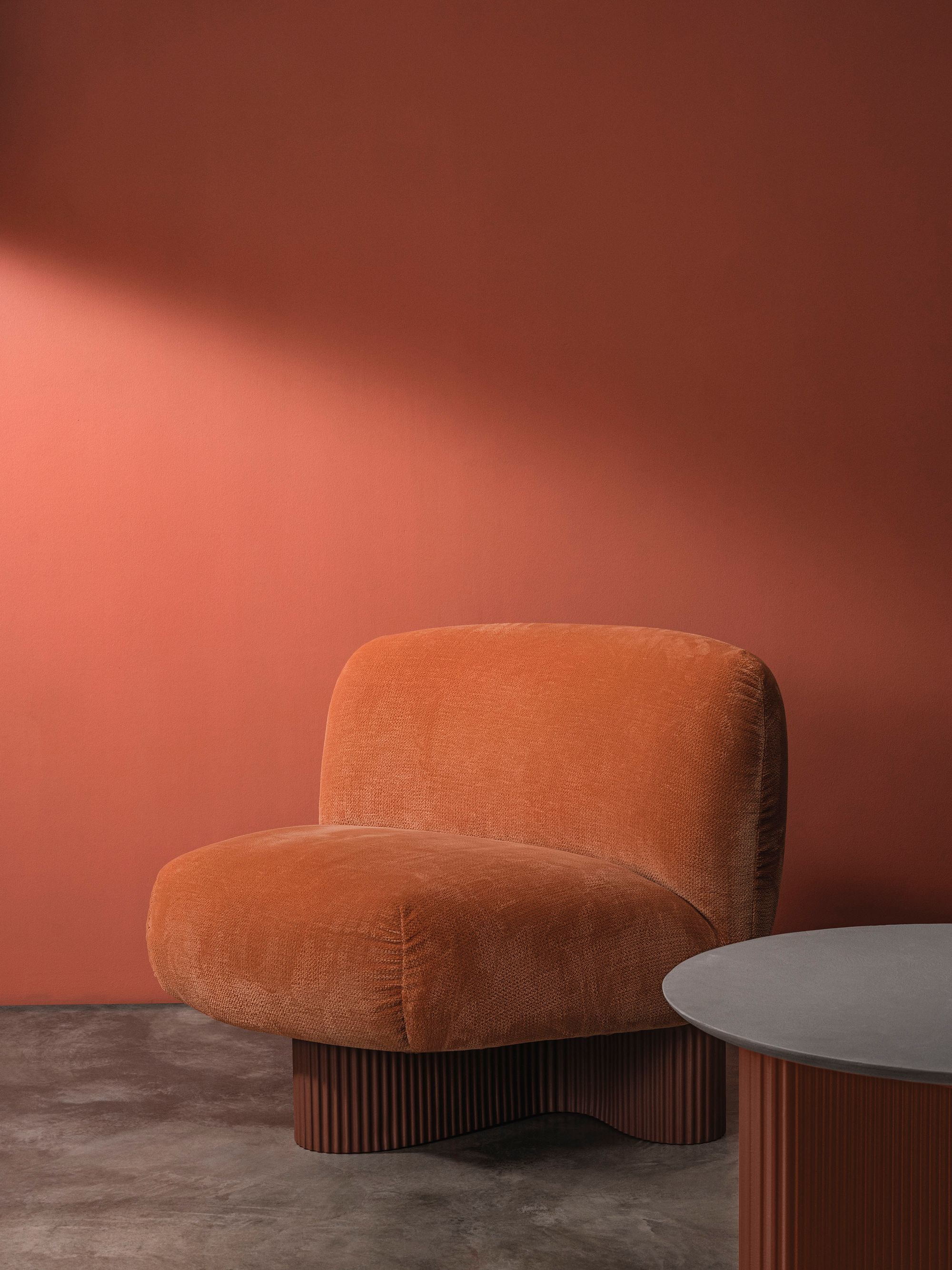
Bolete Lounge BIO®, by Patricia Urquiola for Andreu World. Images courtesy of Andreu World.
Now, 50 years later, this search for community in the home is recreated once again with large modular sofas. You can easily use them to create circular or square configurations, perfect for enhancing conversation, entertaining guests, and celebrating at home. We now become the focus of the living room, not our TVs.
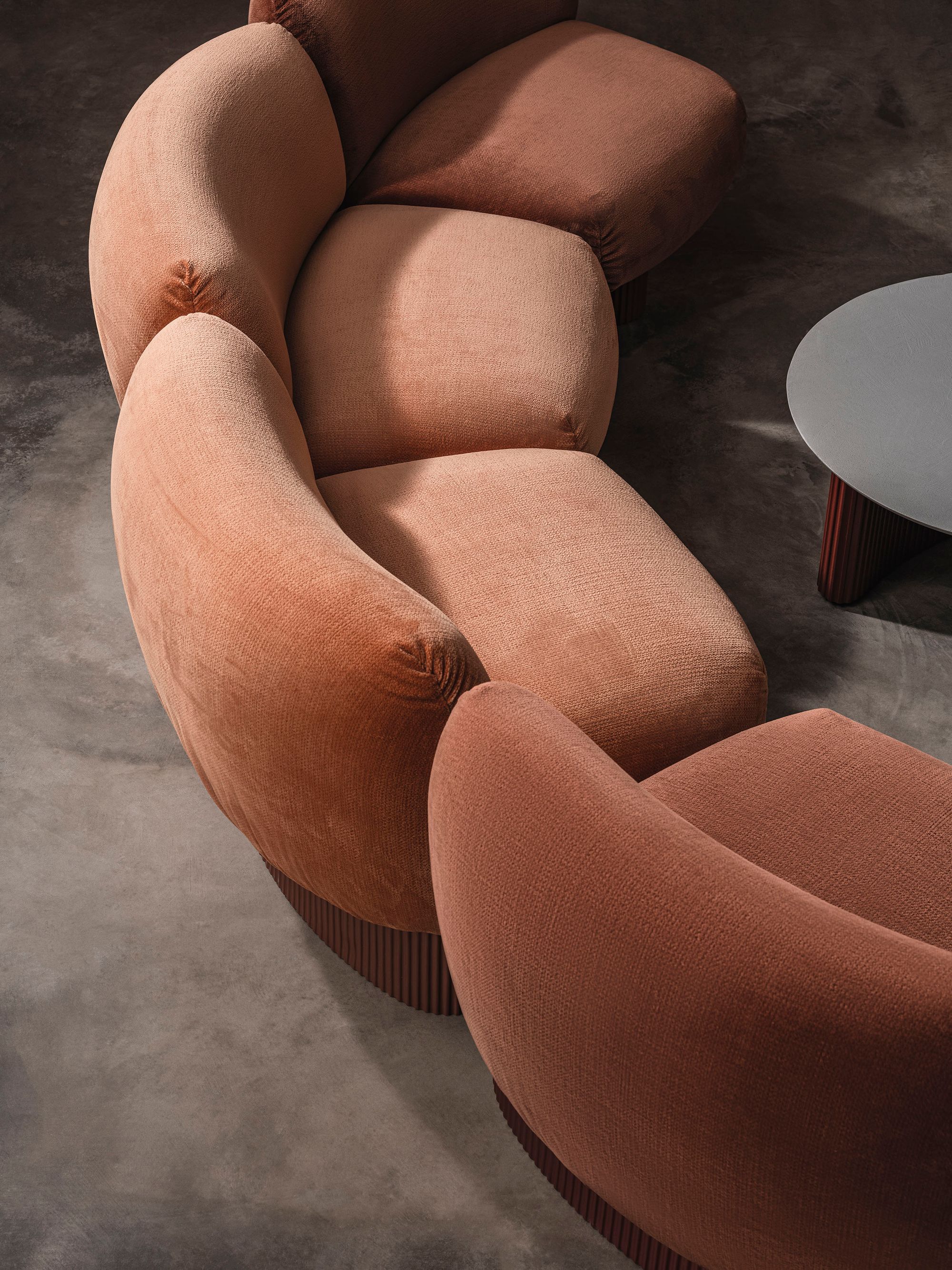
The most spectacular design? The line Bolete by Patricia Urquiola for Andreu World is an armchair without arms whose shape allows for a wide circular configuration. The design is exceptional, with a backrest that molds to the body and a ribbed base with organic shapes. And, although it is available in other finishes, nothing is more seventies than this spectacular orange velvet.
Impactful materials: steel, velvet or glass
The exploration of new and exciting materials, such as stainless steel or plastic, characterized the decoration of the '70s. In addition, classic materials such as glass are reinterpreted with new silhouettes and techniques. Thus, chairs with tubular chromed steel legs, glass or PVC tables, or terrazzo floors became the true features of the decade. And when it comes to textiles, velvet is the '70s star.
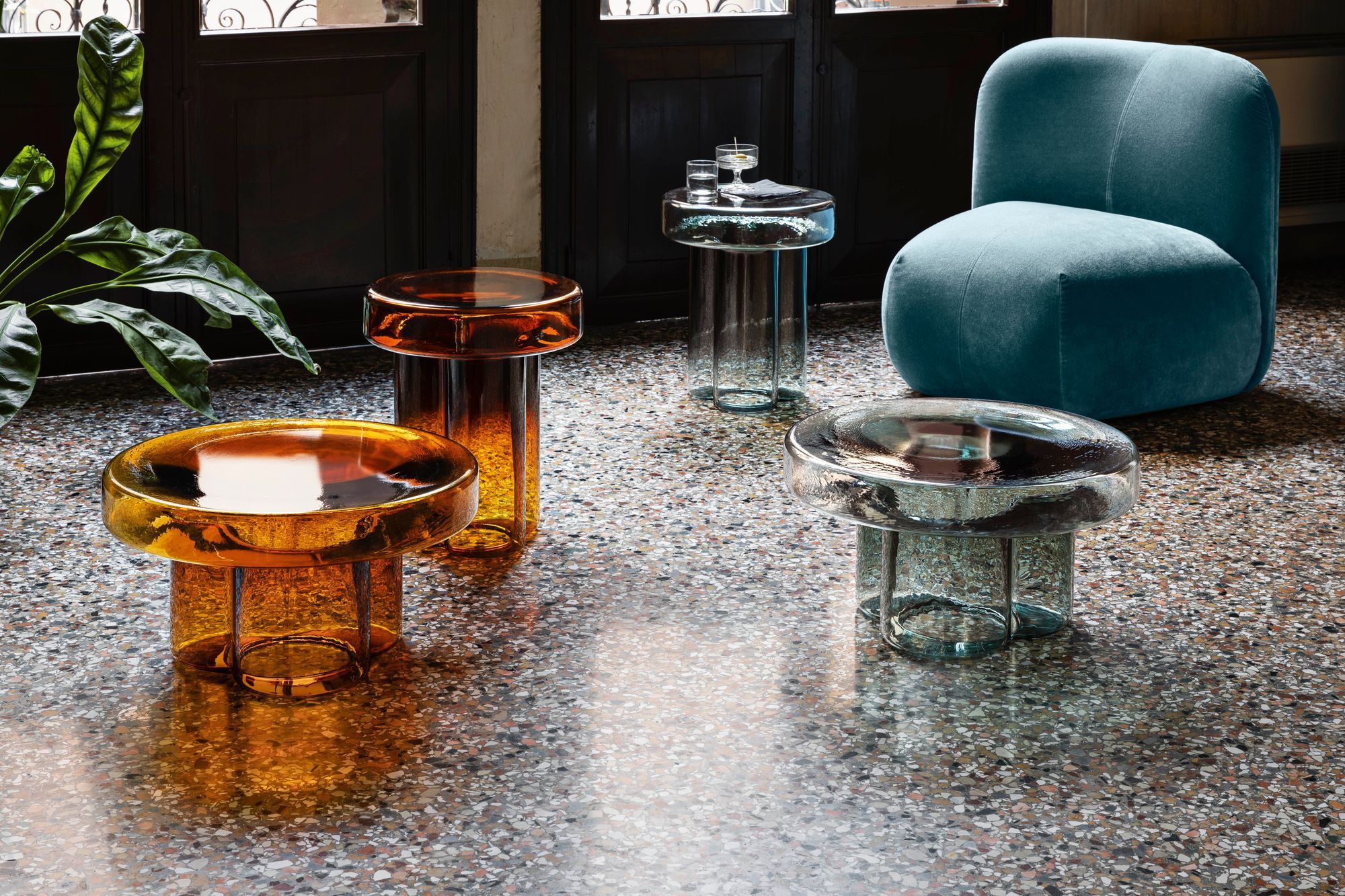

Tables Soda, by Yiannis Ghikas for Miniforms. Images courtesy of Miniforms.
Full color
More than a single accent color, '70s decor seeks to combine different contrasting tones. As if coming out of a Pop Art painting, the bolder '70s interiors were full of vibrant colors combined in an unmistakable aesthetic. Color combinations that were once irreconcilable are now everything.
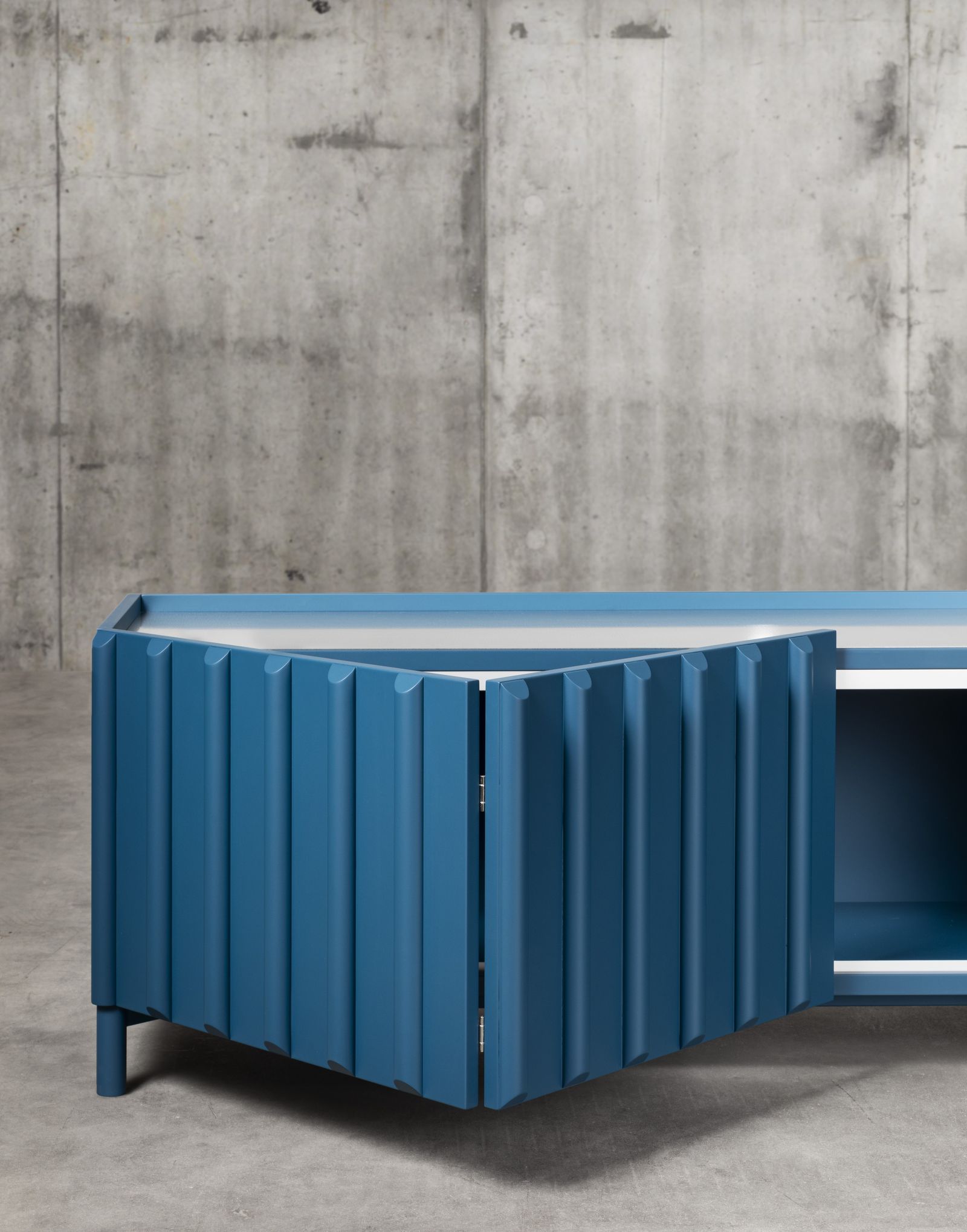
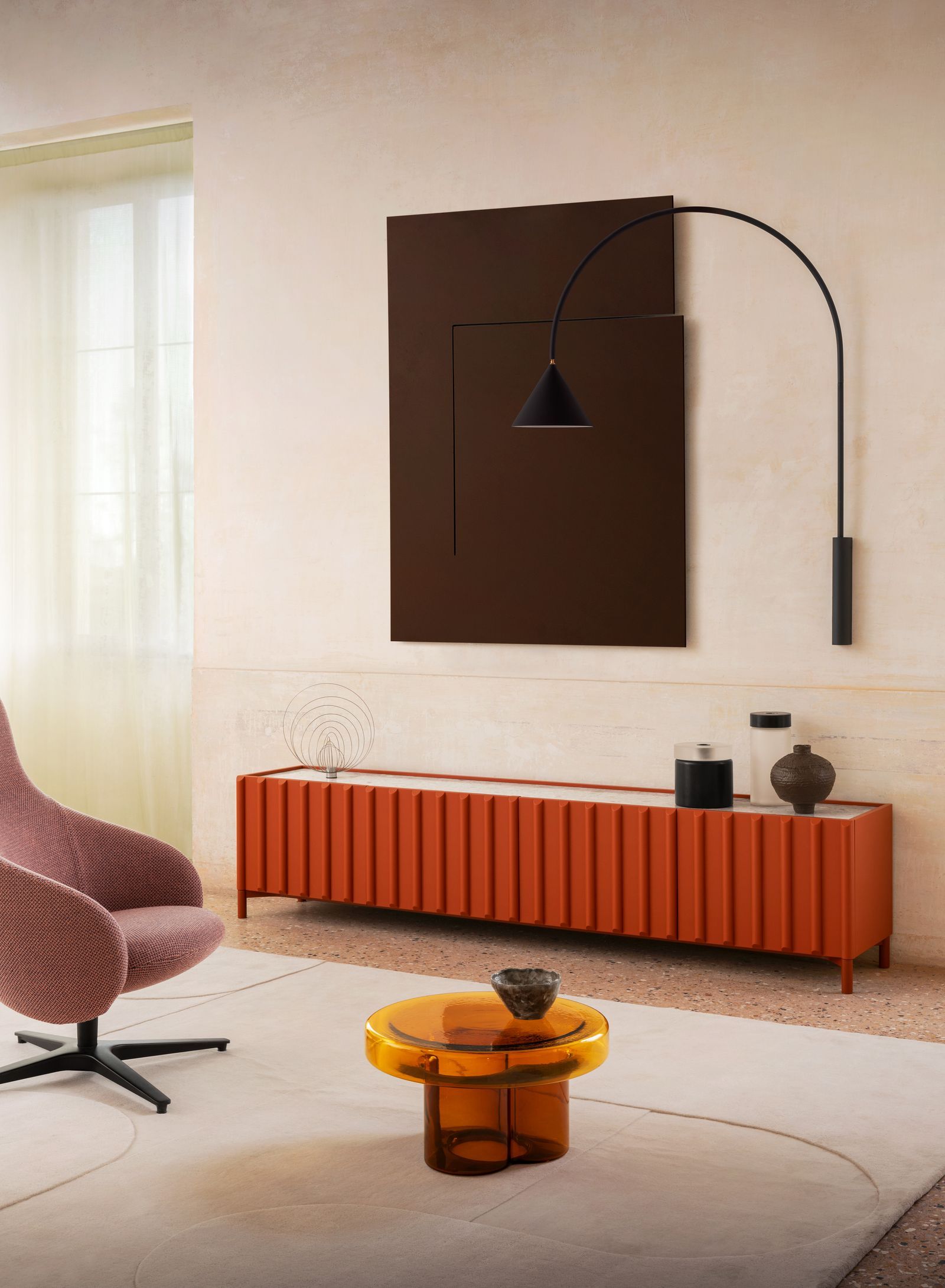
Living room furniture Container, by E-ggs for Miniforms. Images courtesy of Miniforms
Specifically, the most vivid tones of oranges, ochers and pinks were common bets in all types of homes during the '70s. They were often combined with greens, blues or powerful purples. Today, this colorful aesthetic is recreated in trendy interiors and exteriors through energetic and fun pieces. A credenza like the design Container, work by E-ggs for Miniforms , can be a colorful addition to a '70's-inspired living room.
Curved lines
While the curved shapes have been interpreted over the years, they are now reaching their peak. During the '70s, all types of furniture began to take on rounded shapes—from sofas to dining tables or armchairs, which came to look like real bubbles.
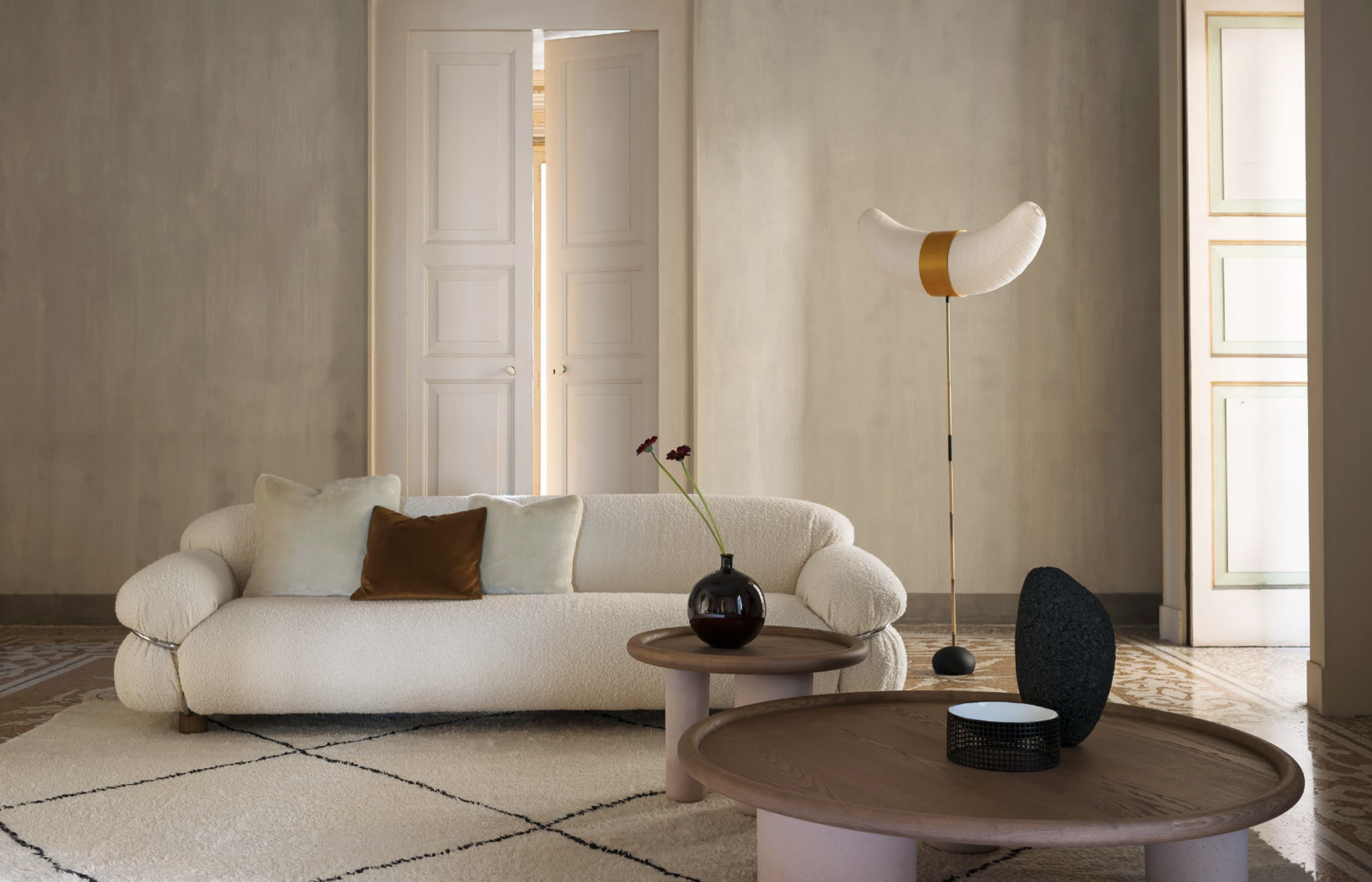
Now, these silhouettes are finding a new place in our homes. The most iconic '70s sofas, such as the Sesann or the recognizable Camaleonda, will fit perfectly in the most sophisticated homes. New designs also make a statement, such as the new sofas that James Wagell presents together with the Italian firm Tacchini (the designs Julep Soft and Roma Nuvola).
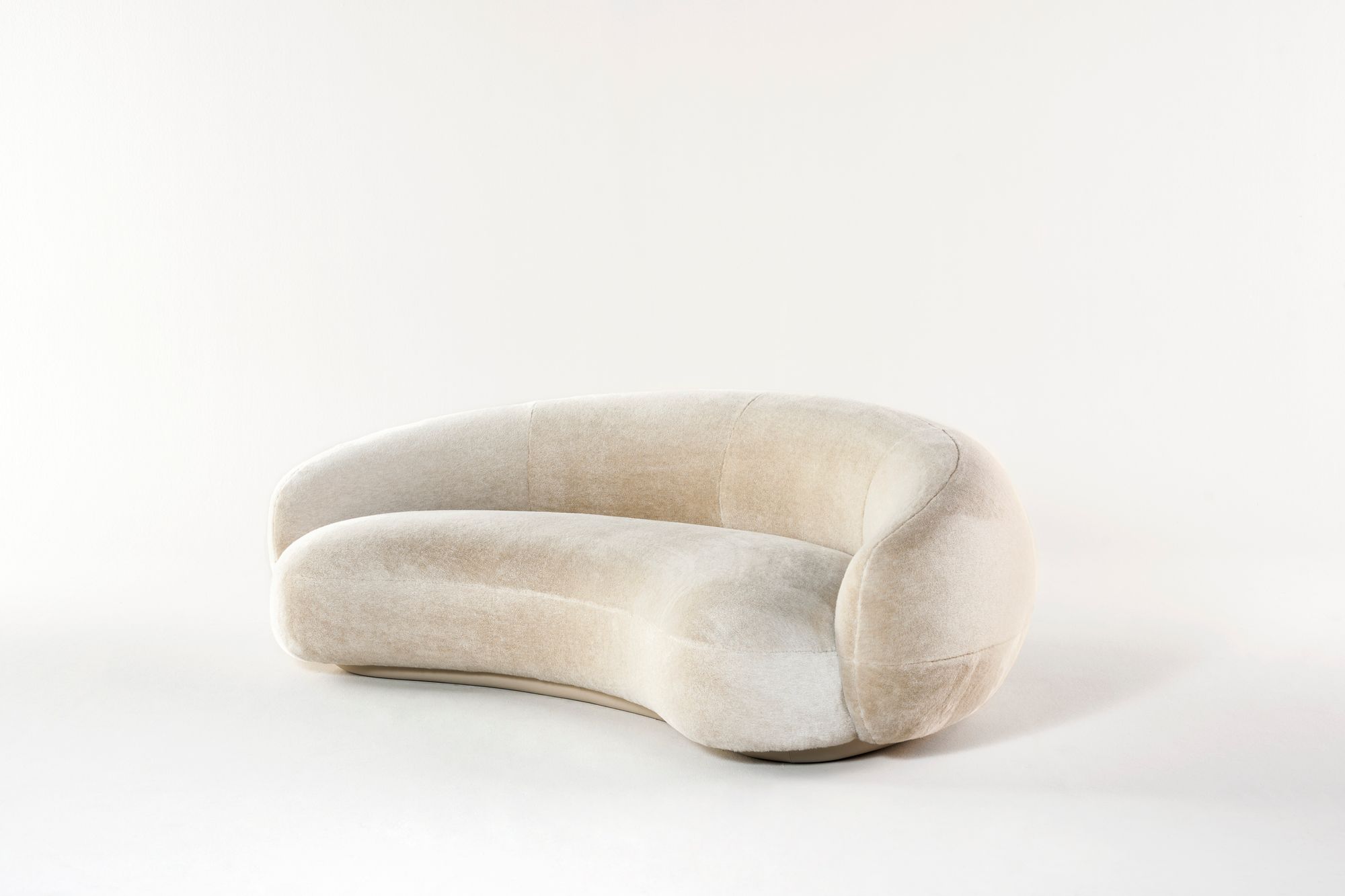
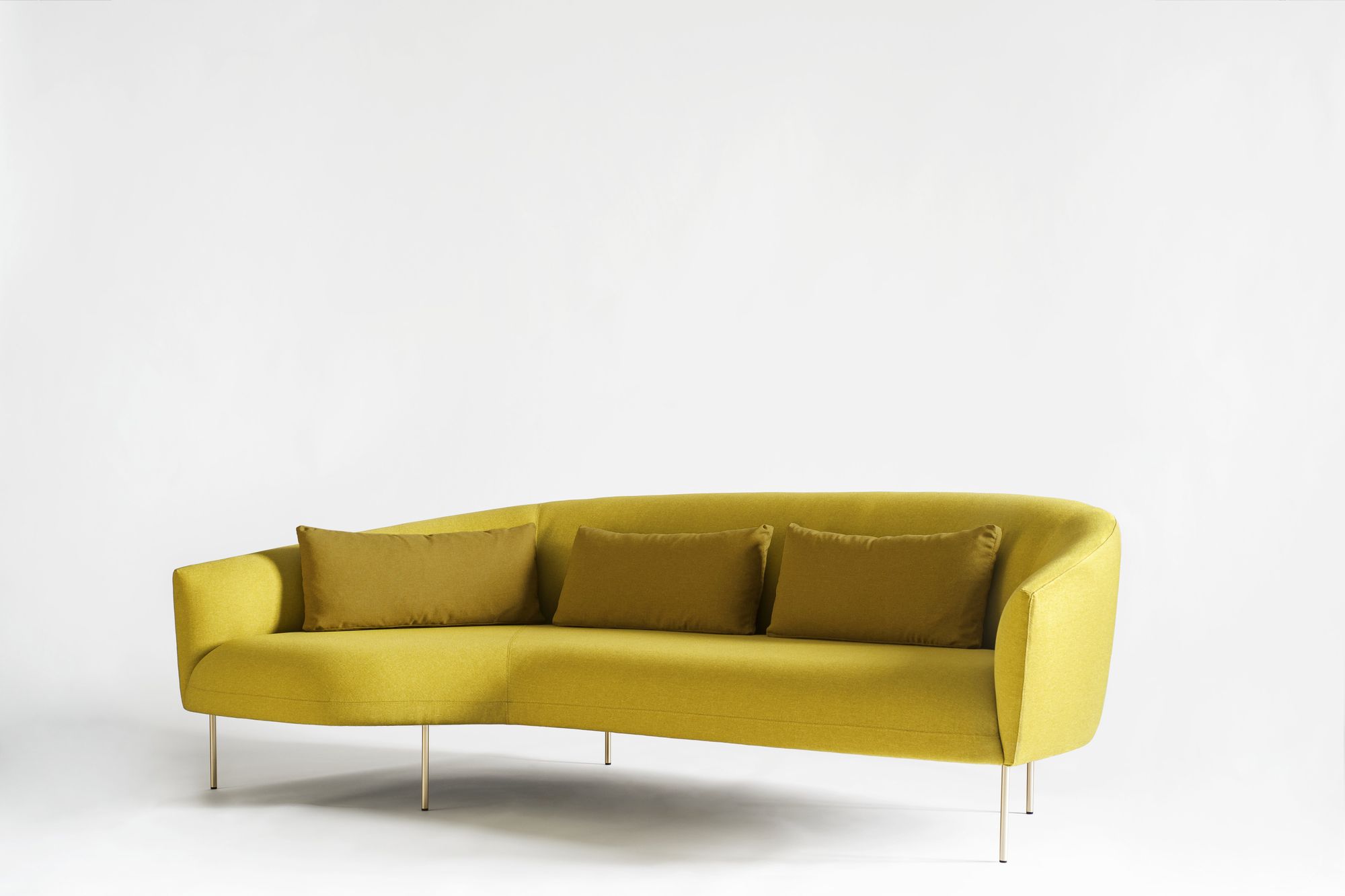
A futuristic touch
Although it had begun before, the space race was a milestone during the 1970s. And, while the great world powers set out to conquer space, homes were adorned with futuristic details of aerospace inspiration.
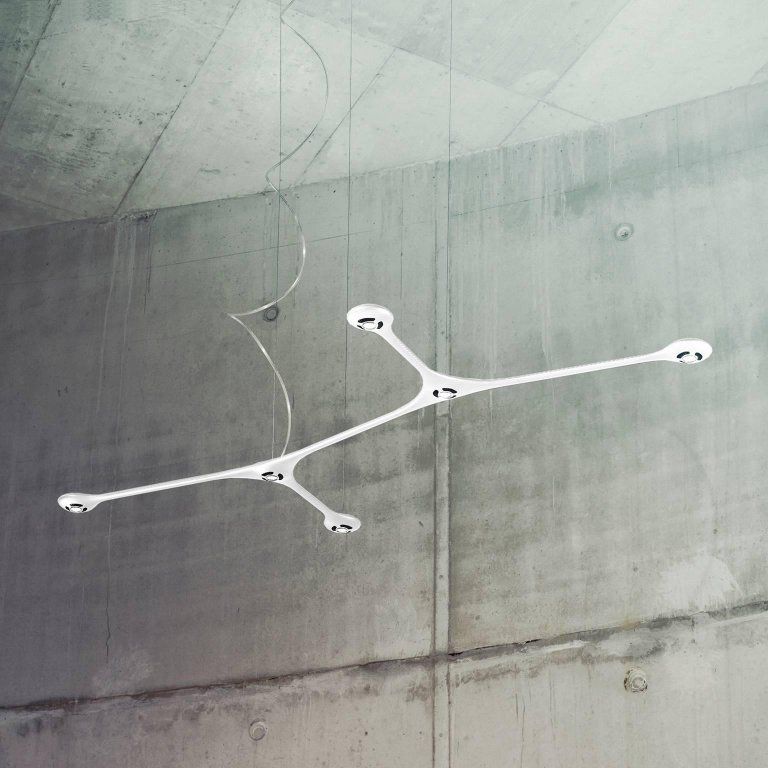

Lamps Carbon Light by Asobi Studio for Tokyo. Images courtesy of Tokyo.
In the '70s, designers and architects created spectacular space-inspired designs. And in many cases, the lamps were the cornerstone of this aesthetic. In its infinite configurations, the Carbon Light lamp from Tokio is a true heir to that trend.
Psychedelic prints
On the other hand, the '70s were a period of liberation, marked by the birth of disco music and a destructive drug boom. All this could have inspired the origin of a new trend: psychedelia. With the '70s, new prints, patterns and motifs arrived, which left their mark on the decor of the time.
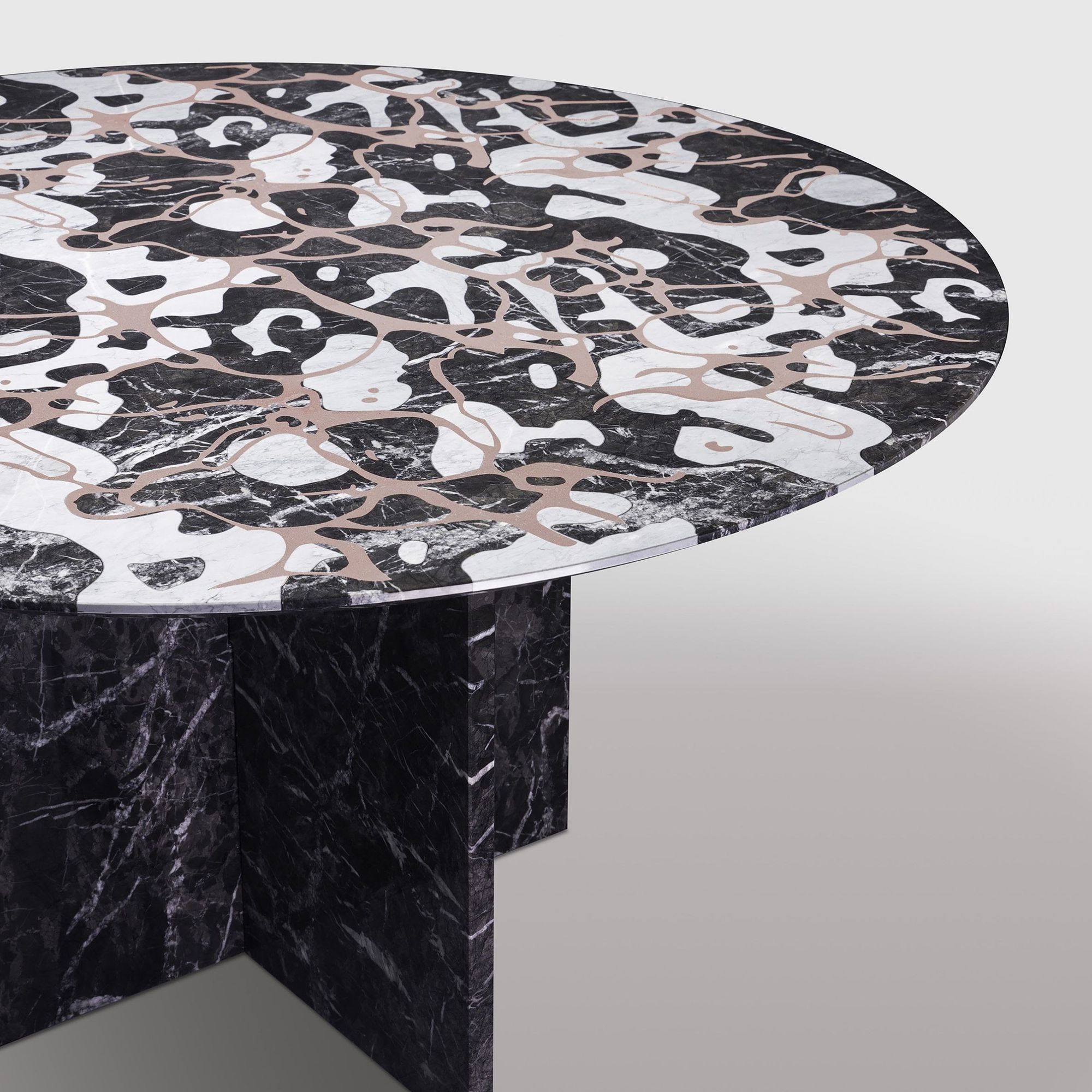
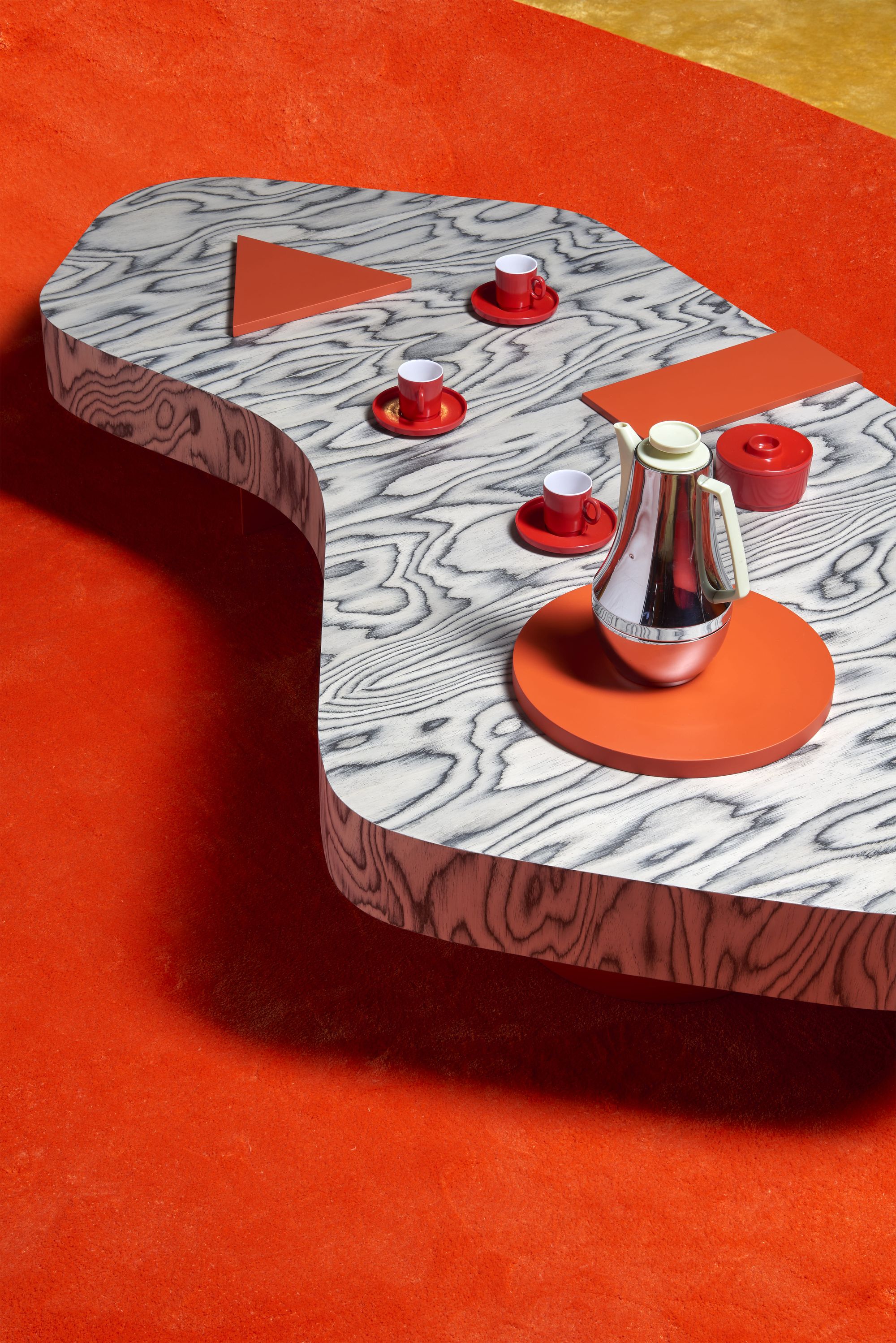
Small table Marble Marbling, by studio zanellato/bortotto for delsavio 1910, by Studiopepe for Sancal (left). Images courtesy of delsavio 1910 and Sancal.Bold. On the right, the coffee table
These psychedelic patterns are returning now, too, in the form of countless textiles, wallpapers or works of art. But—taking it to the next level—hard surfaces, such as countertops and floors, are also covered with interesting motifs through the popular terrazzo or valuable stones loaded with texture.
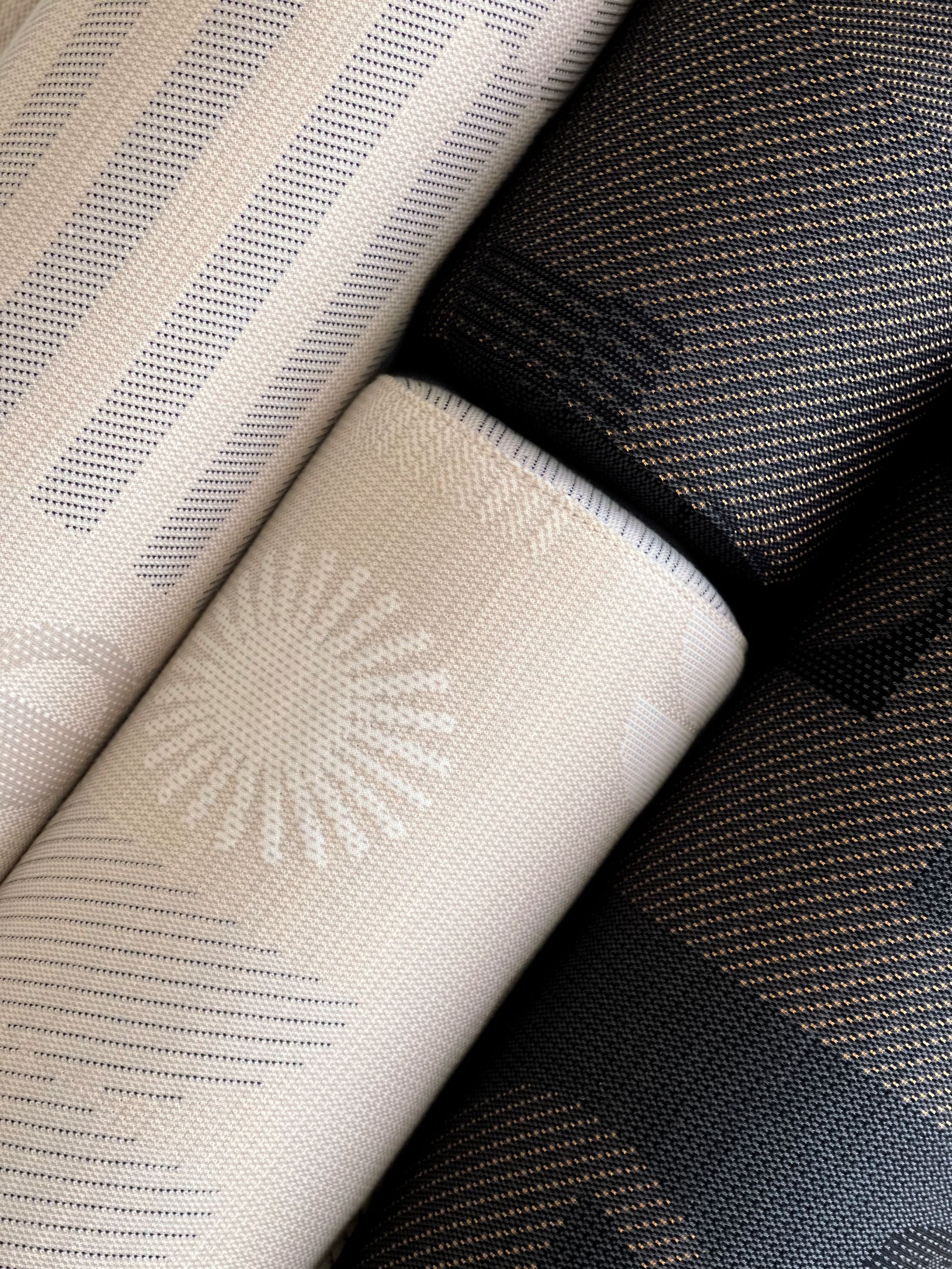
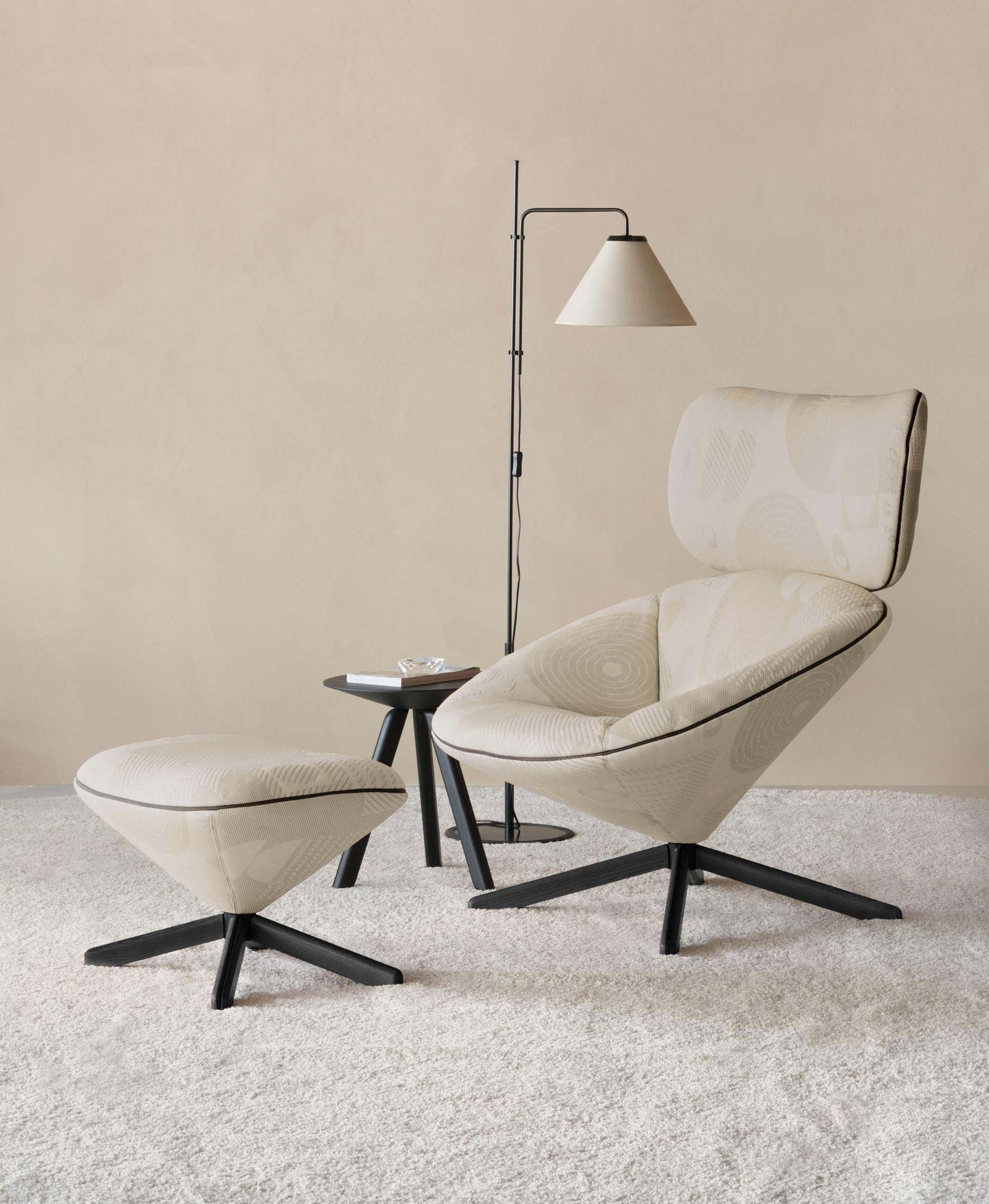
Fabrics Day and night party, by Sancal in collaboration with Byborre (left). Armchair Turtle by Isaac Piñeiro for Sancal (right). Images courtesy of Sancal.
And, if a brand can bring back these psychedelic patterns, it is Sancal. Founded in 1973, the Spanish firm celebrates its 50th anniversary this year. For such a special occasion, the firm has launched the Fiesta fabric (available in two versions: day and night), a beautiful reference to the exuberant decoration of the '70s but in a more versatile finish.
A fun touch
As part of that desire for excitement and celebration that marked the period, the '70s-inspired decor was marked by a happy and fun tone. Beyond loud colors and prints or innovative materials, the '70s brought new textures and designs. Fur cushions, spherical armchairs or mirror balls are just some of the additions that can be found in a '70s-style home.
The furry armchairs, the little tables, Faces or the sofa Link (which has the shape of a huge chain) by Sancal perfectly reflect that fun seventies tone.
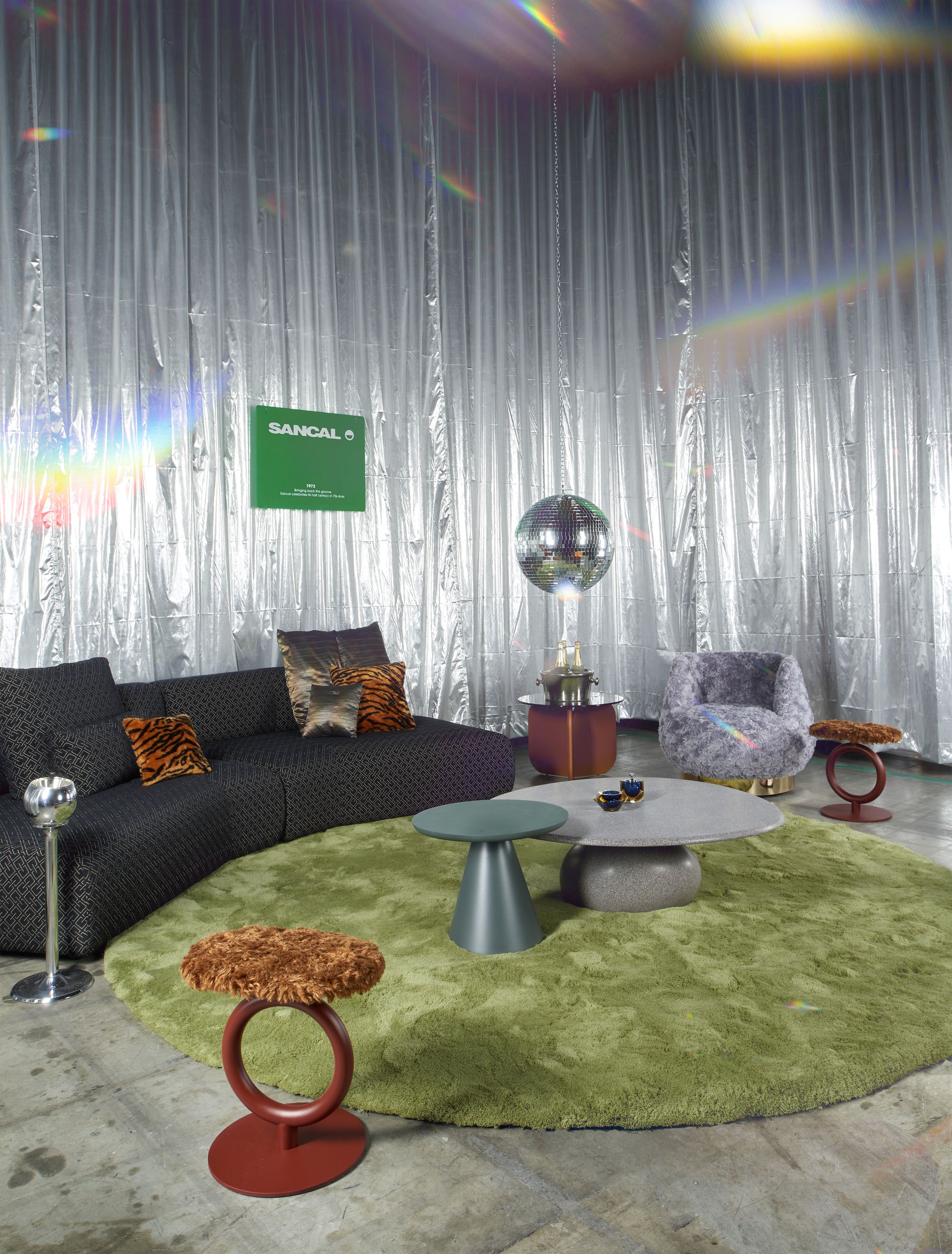
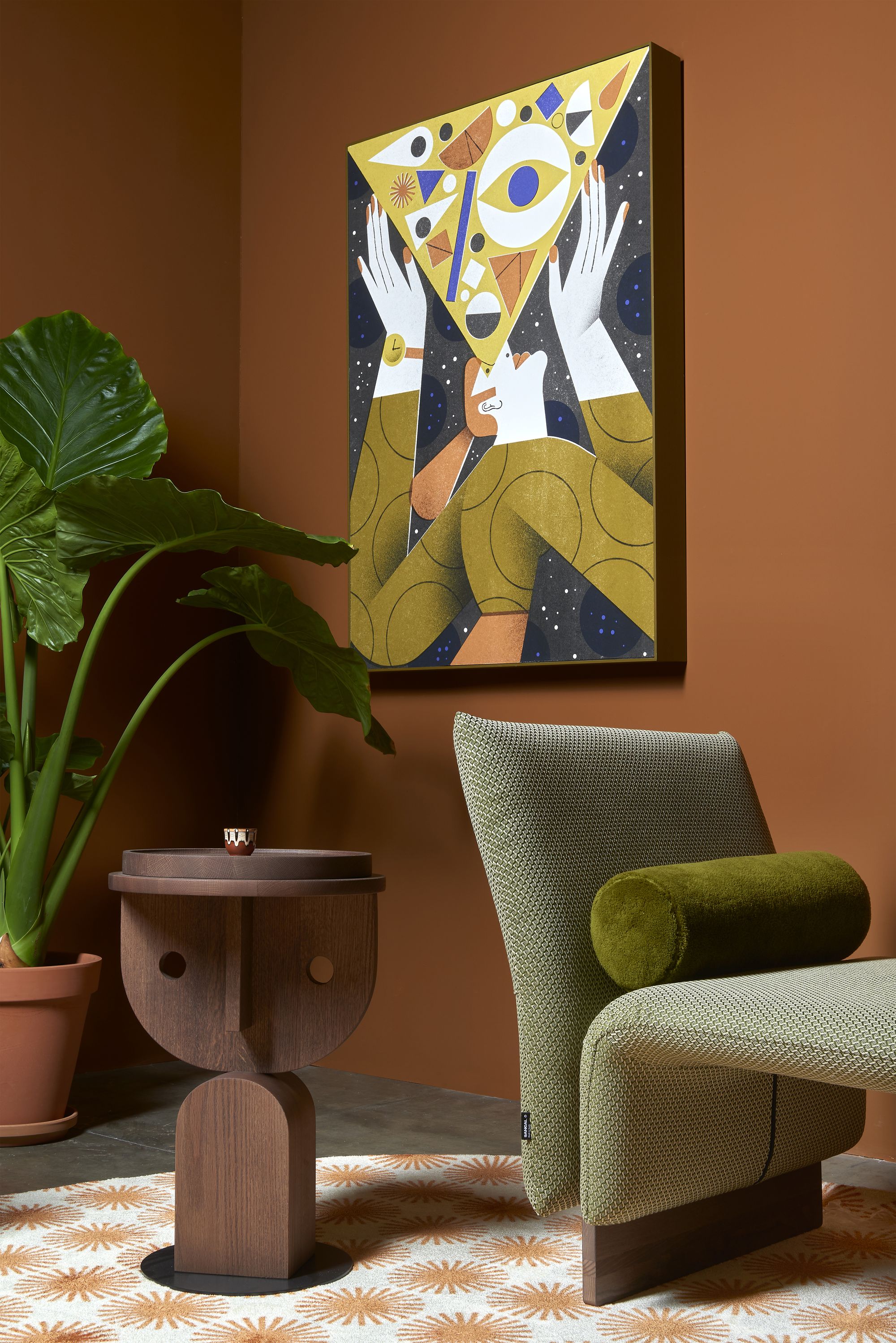
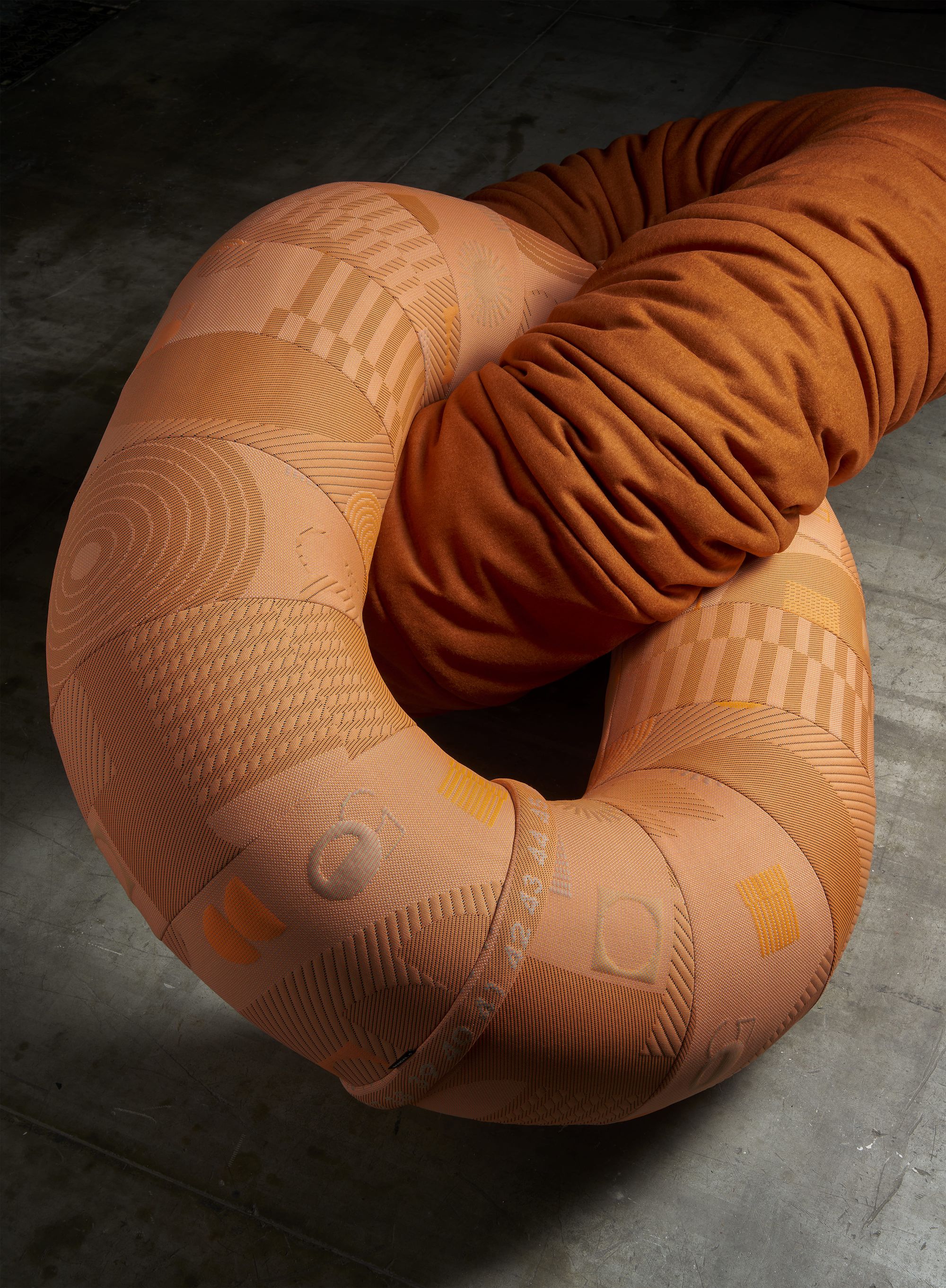
Stand by Sancal at the Salone del Mobile in Milan 2023. Images courtesy of Sancal.

